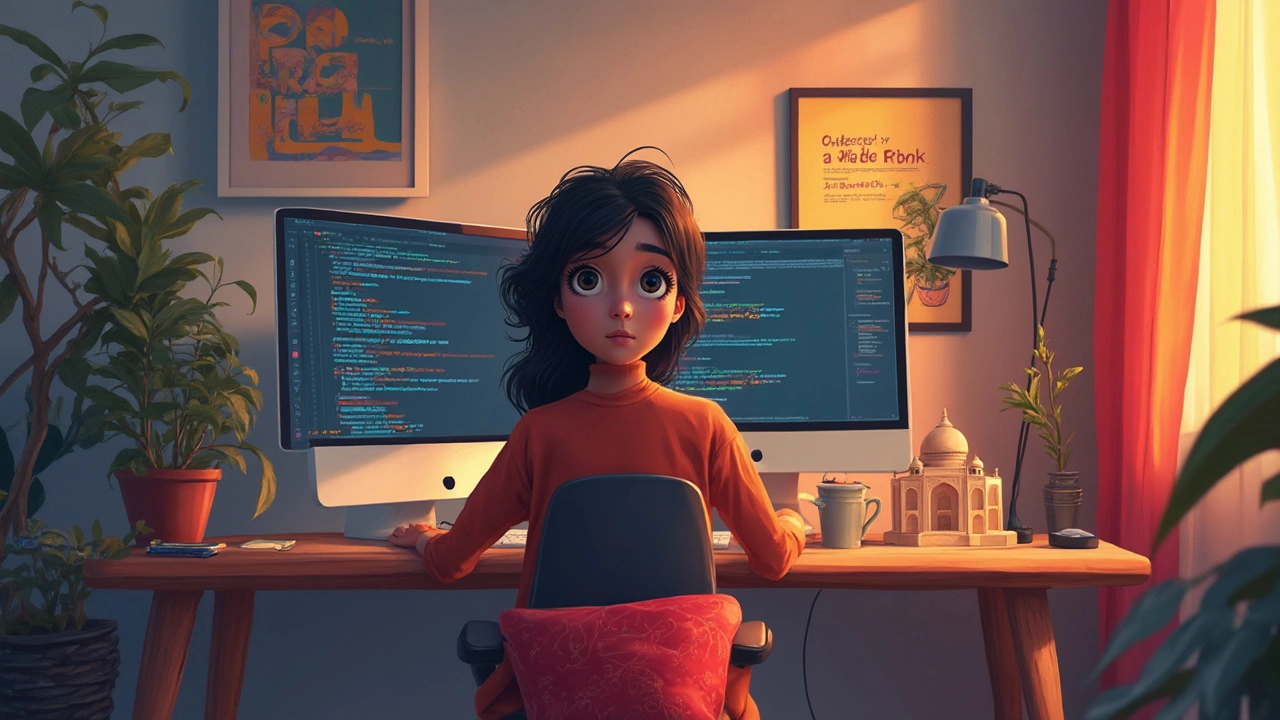Ever wondered who between a web developer and a UX designer makes more dough? It's a common question for tech lovers and job seekers alike. Let's get into the nitty-gritty of both roles and explore how their salaries compare.
At first glance, web developers and UX designers might seem to swim in the same tech waters. Both craft the digital experiences we interact with daily. But when it comes to their earnings, the story gets a little more nuanced. Let's break it down.
Web developers are the builders of the web. They take designs and transform them into functional websites using coding languages like HTML, CSS, and JavaScript. Your typical web developer could specialize in front-end, back-end, or full-stack development, each with its own pay scale.
On the flip side, UX designers focus on the user's journey and experience. They research, design, and test to ensure products are user-friendly and delightful. Because they drive customer satisfaction and retention, companies value UX designers highly, sometimes reflecting in their paychecks.
- Understanding the Roles
- Salary Comparison
- Factors Influencing Earnings
- Career Growth and Opportunities
Understanding the Roles
When diving into the tech world, understanding the web developer and UX designer roles is crucial. They play distinct but interconnected parts in building digital products.
Web Developer: The Backbone Builder
Web developers are the technical wizards who create the magic behind a website. They write code—primarily in languages like HTML, CSS, and JavaScript—to turn web designs into fully functional websites. Depending on their specialization, they might work as front-end developers (handling what users see), back-end developers (managing servers and databases), or full-stack developers (a bit of both). Each path has its perks, challenges, and salary ranges, meaning not all developers earn the same.
In 2023, employment growth for web developers was projected to rise by about 13% over the next decade, showing a strong demand for their coding skills.
UX Designer: Crafting the Perfect User Experience
UX designers are the architects of digital experience. Their job goes beyond just making things look pretty. They ensure that products are not only user-friendly but also enjoyable to use. By conducting user research, creating wireframes and prototypes, and testing designs, UX designers aim to solve real user problems.
Companies heavily rely on UX designers to enhance user satisfaction, which, in turn, boosts customer loyalty and business revenue. This significant impact often translates to competitive salaries for UX designers.
In a mid-2023 survey, it was found that 70% of companies reported a dedicated budget for UX design, acknowledging its importance in business strategy.
The overlap between these roles can sometimes blur, especially in smaller companies where individuals might take on multiple responsibilities. However, knowing the core difference helps in carving out a niche in this dynamic tech landscape.
Salary Comparison
When it comes to choosing between being a web developer and a UX designer, salary is often a big factor. So, who earns more? Well, it kind of depends on a few things like location, experience, and industry demand.
Generally speaking, web developers have a ballpark starting salary of around $50,000 to $60,000 a year for beginners. With a few years under their belt and some solid projects in their portfolio, experienced developers can haul in $85,000 to $125,000 annually.
As for UX designers, they're certainly holding their own in the salary department. Kick-off salaries for junior UX designers can hover around the $55,000 to $70,000 range. Seasoned UX designers, particularly those with a knack for research and user testing, can command salaries from $90,000 to $130,000. Not too shabby, right?
| Role | Junior Salary | Senior Salary |
|---|---|---|
| Web Developer | $50,000 - $60,000 | $85,000 - $125,000 |
| UX Designer | $55,000 - $70,000 | $90,000 - $130,000 |
Of course, factors like company size, city, and industry can sway these figures. Tech hubs like San Francisco or New York naturally offer more, but the cost of living can eat into that income.
Interestingly, some startups offer competitive salaries and extra perks for both kinds of roles, even if they can't match the highest salaries big firms like Google or Apple might pay. So, if a balance between a decent salary and meaningful work matters to you, consider the overall job environment as well.

Factors Influencing Earnings
When it comes to figuring out why a web developer's salary might differ from a UX designer's salary, there are a few key factors at play. Both roles are distinct, but their earning potential can be shaped by various elements.
1. Experience Level
Experience is a biggie. Just like in most fields, the more years you've got under your belt, the more you're likely to make. A senior web developer or UX designer can earn significantly more than someone just starting out. According to a study by PayScale, salaries can jump by up to 50% once you hit around five years in the industry.
2. Location Matters
Where you live can seriously impact your paycheck. For instance, tech experts in San Francisco or New York City often earn higher than those living in smaller towns due to the higher cost of living and demand for tech skills. On the flip side, remote work is becoming more common, letting people live in more affordable areas while earning big city wages.
3. Company's Niche & Size
Not all companies treat these roles the same way. A tech giant like Google might shell out way more than a small startup. Plus, certain industries like finance or healthcare might offer higher pay due to the complexity of projects.
According to Glassdoor, "Tech professionals working in the finance industry can command up to 20% more in salary than peers in other sectors."
4. Skills and Specializations
Having specialized skills can be a game-changer. Web developers proficient in sought-after programming languages or frameworks, like React or Node.js, often have higher earning potential. Similarly, UX designers with strong interaction design or research capabilities can command higher wages.
5. Market Demand
| Role | National Average Salary |
|---|---|
| Web Developer | $78,000 |
| UX Designer | $85,000 |
As new technologies emerge, market demand can shift. Emerging fields or popular trends can cause salaries to rise if there are not enough skilled people available.
Career Growth and Opportunities
So you're eyeing a career as a web developer or a UX designer. Awesome choice! Both paths offer robust career growth, but let's break down where each can lead you.
Climbing the Web Developer Ladder
Web development is kind of like a choose-your-own-adventure book. You can start as a junior developer and work your way up the ranks to senior roles, project manager, or even CTO if you're aiming high. With tech constantly evolving, web developers who keep learning and adapting can find themselves in high demand.
Specializing helps too. Want to go deep into front-end development, or is back-end where your heart lies? Honing in on a specialty can increase your earning potential and open doors to niche projects that pay well.
The UX Designer Path
UX designers also have a rewarding climb ahead. Start with entry-level positions focusing on user research or visual design. With experience, you can step up to senior UX designer, UX lead, or even the head of UX. Leadership roles often come with not just higher pay but a significant impact on how a product is shaped.
There's an exciting trend of UX designers moving into strategic roles—think product management or consulting. Thanks to their strong understanding of user behavior, UX designers can drive decisions that shape company strategies.
Opportunities Galore
Both web developer and UX designer roles offer opportunities beyond the traditional tracks. Freelancing is one avenue, offering flexible work schedules and project variety. Alternatively, you could branch into teaching or mentoring, sharing your knowledge with newcomers.
Check out this quick comparison:
| Role | Common Promotions |
|---|---|
| Web Developer | Senior Developer, Project Manager |
| UX Designer | Senior Designer, UX Lead |
Whether you're building something from scratch as a web developer or crafting delightful experiences as a UX designer, the journey offers endless learning and growth—and that's what makes these careers truly exciting.


